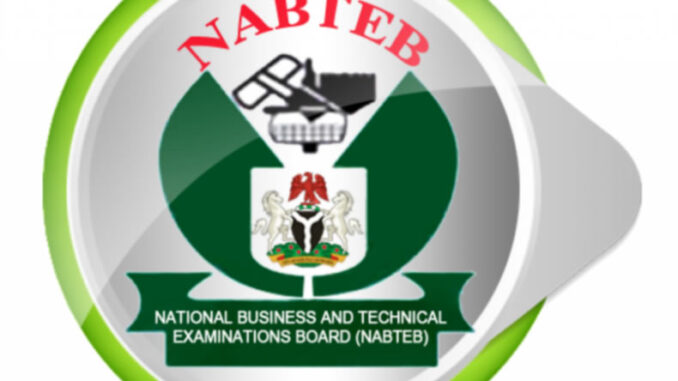
BIOLOGY-OBJ
01-10 ABADABDDBA
11-20 CBBBBAABBA
21-30 DAAADACAAB
31-40 BAACDABBBA
41-50 ACABBDCDAB
COMPLETED
2024 NABTEB BIOLOGY THEORY ANSWERS
======================================
SECTION I: INTRODUCTORY BIOLOGY
(1a)
(i)Preparation: Soak a piece of dialysis tubing in water to make it flexible.
(ii) Filling: Fill the tubing with a concentrated sugar solution (e.g., sucrose solution).
(iii) Sealing: Tie the ends of the tubing securely to prevent leakage.
(iv) Immersion: Place the filled tubing in a beaker of distilled water.
(v) Observation: Over time, water will move through the semi-permeable membrane into the tubing due to osmosis, resulting in an increase in the volume inside the tubing.
(1b)
(i) Nutrient Absorption: Osmosis helps in the absorption of water and dissolved nutrients from the soil by plant roots.
(ii)Cellular Hydration: Osmosis maintains the turgidity of plant cells, which is essential for maintaining structure and function.
(iii)Waste Removal: Osmosis aids in the removal of waste products from cells, ensuring cellular health and function.
*====================================*
*SECTION II: FLOWERING PLANTS AND SOIL SCIENCE*
(2a) Phototropism:
Positive phototropism is the growth of a plant towards a light source.
Example: The bending of a sunflower stem towards sunlight.
(ii) Negative Phototropism:
Negative phototropism is the growth of a plant away from a light source.
Example: The growth of roots away from light and deeper into the soil.
(2b)
C6H12O6+6O2—>6CO2+6H2O+Energy(atp)
(2c)
(i)Large Surface Area: Increases the area available for gas exchange.
Example: Alveoli in the lungs.
(ii) Thin Membranes: Allows for efficient diffusion of gases.
Example: The walls of alveoli and capillaries.
(iii)Rich Blood Supply: Ensures a constant supply of blood for gas exchange.
Example: The extensive capillary network surrounding the alveoli.
(3a)
Microorganisms decompose organic matter, converting it into humus, which enriches the soil with nutrients. They also fix atmospheric nitrogen into a form that plants can absorb, enhancing soil fertility. Additionally, they help in the breakdown of complex organic substances, making essential nutrients available to plants.
(3b)
AFFORESTATION
(i)Prevents soil erosion by stabilizing the soil with tree roots.
(ii) Enhances biodiversity and provides habitats for various species.
(iii) Contributes to carbon sequestration, reducing greenhouse gases.
WILDLIFE CONSERVATION
(i) Maintains ecological balance by preserving species and their natural habitats.
(ii) Supports biodiversity, which is crucial for ecosystem resilience and health.
(iii) Protects endangered species from extinction.
(3c)
(i)Water Erosion: The removal of soil by rainfall and surface runoff.
(ii) Wind Erosion: The transportation of soil particles by wind, often occurring in dry and barren areas.
*====================================*
*PART III:ANIMAL BIOLOGY*
(4ai)
A joint is a structure in the body where two or more bones meet, allowing for movement and providing mechanical support.
(4aii)
Muscles play a critical role in movement by contracting and relaxing. When a muscle contracts, it pulls on a tendon, which then moves the bone to which it is attached. Muscles typically work in pairs; while one muscle contracts (agonist), the opposite muscle relaxes (antagonist), enabling smooth and coordinated movements.
(4bi) Tendon:
Tendons connect muscles to bones. Their primary function is to transmit the force generated by muscle contraction to the bone, facilitating movement.
(4bii) Ligament:
Ligaments connect bones to other bones at joints. They provide stability and support to the joints, preventing excessive movement that could lead to injury.
(4biii) Synovial Fluid:
Synovial fluid is found within synovial joints. It lubricates the joint, reducing friction between the articular cartilages during movement, and supplies nutrients to the cartilage.
(4biv) Ball and Socket Joint:
A ball and socket joint allows for a wide range of movement in multiple directions. It consists of a spherical end of one bone (ball) fitting into a round cavity (socket) of another bone.
*Example*: The shoulder and hip joints.
(5ai)
(i) Endoskeleton: An internal skeleton made of bone or cartilage.
(ii) Exoskeleton: An external skeleton that provides support and protection.
(iii) Hydrostatic Skeleton: A fluid-filled cavity surrounded by muscles.
(5aii)
(i) Endoskeleton: Humans
(ii) Exoskeleton: Insects (e.g., beetles)
(iii) Hydrostatic Skeleton: Earthworms
(5b)
(i) Support: Provides a framework that supports the body and maintains its shape.
(ii) Protection: Protects vital organs (e.g., the skull protects the brain, the rib cage protects the heart and lungs).
(iii) Movement: Facilitates movement by providing attachment points for muscles.
(iv) Production of Blood Cells: Bone marrow produces red blood cells, white blood cells, and platelets.

Leave a Reply